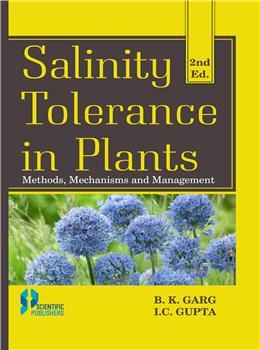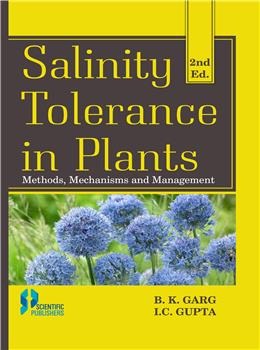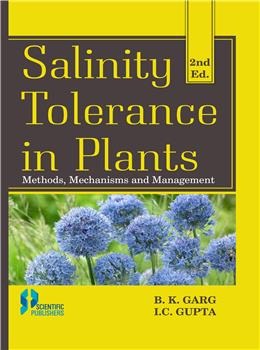Salinity Tolerance in Plants: Methods, Mechanisms and Management 2nd Ed
Salinity Tolerance in Plants: Methods, Mechanisms and Management 2nd Ed is backordered and will ship as soon as it is back in stock.
Couldn't load pickup availability
Genuine Products Guarantee
Genuine Products Guarantee
We guarantee 100% genuine products, and if proven otherwise, we will compensate you with 10 times the product's cost.
Delivery and Shipping
Delivery and Shipping
Products are generally ready for dispatch within 1 day and typically reach you in 3 to 5 days.
Authors: B.K. Garg & I.C. Gupta
Publisher: Scientific Publishers
Language: English
Edition: 2nd Edition (2019)
ISBN: 9789388449342
E-ISBN: 9789388449366
Binding: Hard Bound
Pages: 552
Size: 6.25 x 9.50 x 2.00 inches
Weight: 940 grams
Description:
"Salinity Tolerance in Plants" explores the complex issue of salt tolerance, a critical challenge for agricultural productivity. The book addresses various physiological, biochemical, and morphological processes involved in salt tolerance, detailing plant responses to salinity and sodicity. It covers crop tolerance at different growth stages, evaluating criteria for assessing tolerance and the mechanisms of salt injury such as osmotic stress, ionic imbalance, and nutrient deficiencies.
Key topics include:
-
Mechanisms of Salt Injury: Osmotic, ionic, and nutrient imbalances impacting plants.
-
Plant Responses: A focus on photosynthesis, respiration, carbohydrate, nitrogen, protein metabolism, enzyme dynamics, and plant hormones.
-
Symbiotic Nitrogen Fixation: Detailed exploration of legume nodulation and nitrogen fixation under salt stress.
-
Nutrient-Salinity Interaction: Critical insights on how essential nutrients interact with salinity and methods for alleviating salt stress.
-
Salt Resistance Mechanisms: Including osmoregulation, organic/inorganic solutes, and techniques to improve salt tolerance.
-
Breeding and Genetic Approaches: Strategies such as breeding, genetic variation, tissue culture, somaclonal variation, somatic hybridization, and recombinant DNA technology to enhance salt tolerance in plants.
-
Soil and Groundwater Management: Discusses the properties of salt-affected soils and water and principles for their amelioration and management.
-
Afforestation and Agroforestry: Techniques and recommendations for using salt-tolerant tree species and appropriate crop combinations in agroforestry systems.





